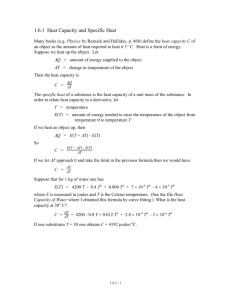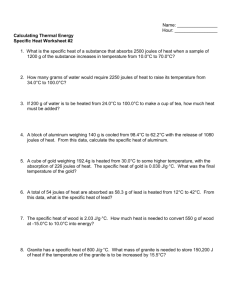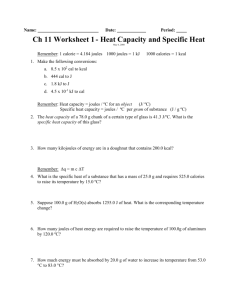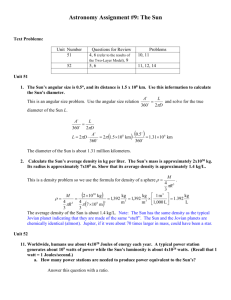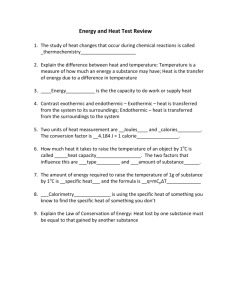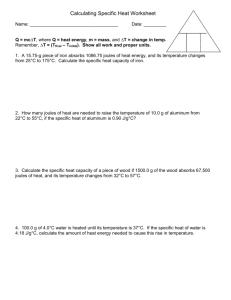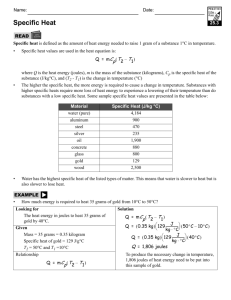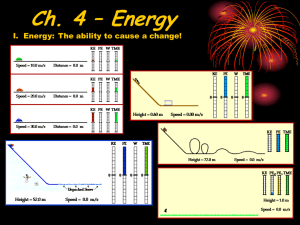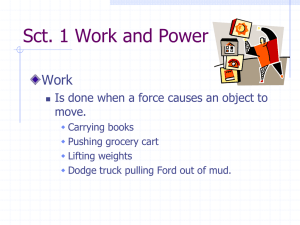Energy and Efficiency
advertisement
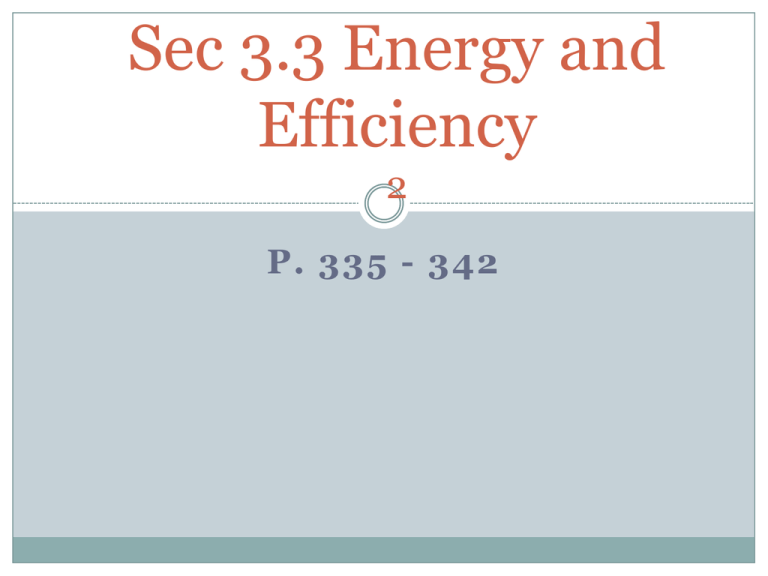
Sec 3.3 Energy and Efficiency 2 P. 335 - 342 Law of Conservation Energy cannot be created or destroyed. It does not appear or disappear, can only be converted from one form to another. However, we usually find that the output energy of a device or system is smaller than the input energy, sometimes much smaller. Most often the energy is lost to heat. Example: when heating a pot, not all the heat goes into the pot, some is lost to the surroundings. Mechanical systems also lose a lot of energy. They lose some energy to sound, heat from friction. These are non-usable forms of energy. In fact, all mechanical systems dissipate or lose some energy, so their usable output energy is always less than their input energy. Understanding Efficiency The efficiency of a device is the ration of useful energy that comes out of a device to the total energy that went in. The more input energy that a device converts to useable output energy, the more efficient the device is. Efficiency is usually calculated as a percentage: % Efficiency = Joules of useful output Joules of input energy x 100% Example 5 J of light energy 100 J electric energy going in 95 J lost to heat energy The efficiency of this light bulb is 5 J/100 J x 100% = 5 %. In other words only 5% of the energy used is converted to light, and the rest is lost to heat. Practice: A diesel truck produces 47.5kJ of useful energy from 125 kJ of diesel fuel. What is the trucks efficiency? % Efficiency = Joules of useful output Joules of input energy % Efficiency = 47.5 kJ x 100% 125 kJ % Efficiency = 0.38 x 100% = 38% efficient x 100% A lawn mower consumed 8 MJ of chemical energy. The efficiency of this mower is 35% efficient. How much useful output energy did the lawn mower produce? The lawn mower used 35% of 8 MJ. 0.35 x 8 = 2.8 MJ % Efficiency = Joules of useful output x 100% Joules of input energy 35% = Joules of useful output x 100% 8 MJ 8 MJ x 0.35 = 2.8 MJ Section 3.4 Reducing the Energy Wasted by Devices Read pgs 339 - 342 Assignment: Page 343 Numbers 2-8

